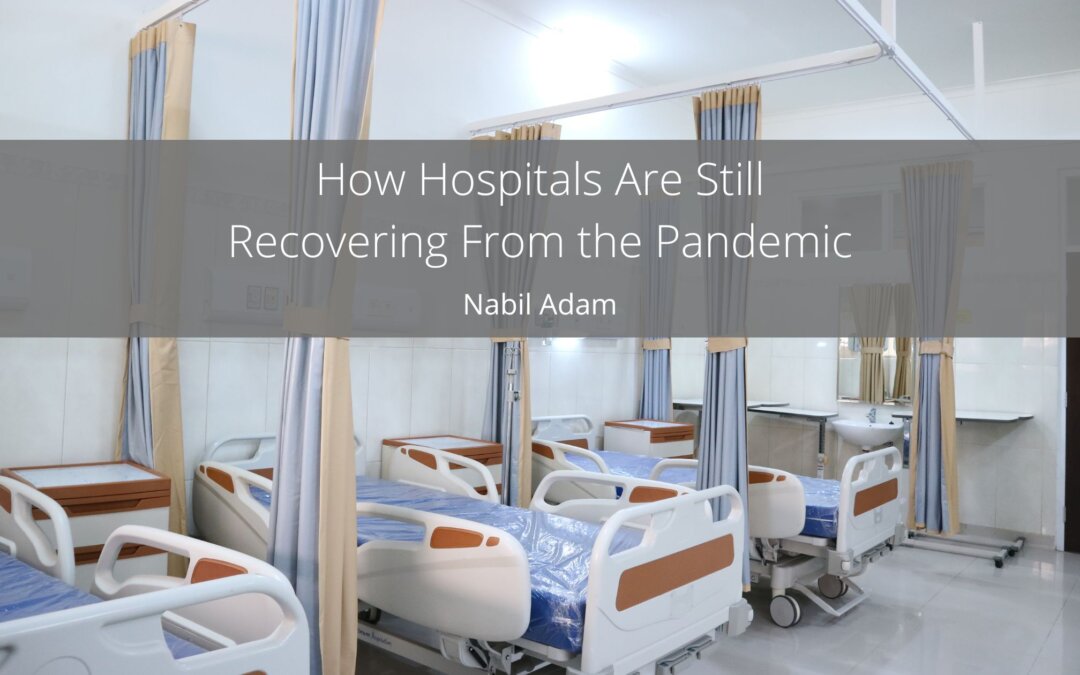Hospitals have been at the epicenter of COVID-19’s unprecedented challenge. As the pandemic subsides, hospitals continue grappling with its lingering effects. This extended recovery phase is not just about dealing with the direct impacts of the virus but also addressing the broader consequences on healthcare delivery, staff well-being, and the evolution of medical practices. Understanding these challenges is crucial in fortifying healthcare systems for future crises and ensuring the sustainability of quality care.
The pandemic strained hospitals beyond their limits, exposing and exacerbating underlying issues within healthcare systems. These ranged from staffing shortages to supply chain disruptions. Hospitals faced an influx of COVID-19 patients, leading to overcrowded ICUs and the redirection of resources from other critical areas. Elective procedures were postponed, leading to a backlog of non-COVID-related medical needs. Additionally, the mental health of healthcare workers suffered significantly due to prolonged stress and burnout.
Moreover, the pandemic accelerated the adoption of telehealth and digital healthcare solutions, reshaping patient care delivery. Hospitals had to rapidly adapt to new technologies and protocols, a transition that continues to evolve. Now, as the immediate threat of the pandemic recedes, hospitals are navigating the aftermath, which includes tackling the backlog of medical procedures, addressing workforce challenges, and integrating new healthcare technologies and practices into their standard operating systems.
Addressing Backlogs in Care
In the pandemic’s aftermath, one of the most pressing challenges for hospitals is managing the significant backlog of elective and non-urgent procedures. The postponement of these procedures was necessary at the height of the pandemic but has resulted in a cascade of delayed diagnoses and treatments. Hospitals are now strategizing to clear this backlog without compromising the quality of care.
This involves triaging patients based on urgency, expanding operating hours, and partnering with other healthcare facilities to share the load. Additionally, there is an increased focus on outpatient care and minimally invasive procedures to expedite recovery and free up hospital resources. However, this push to catch up must be balanced against the risk of overwhelming a workforce already facing burnout. Innovative scheduling, staff support programs, and continued reliance on telehealth for suitable cases are part of hospitals’ multifaceted approach to navigating this challenge.
Workforce Challenges and Solutions
The pandemic has had a profound impact on the healthcare workforce, with many professionals experiencing burnout, mental health issues, and even leaving the profession. Hospitals are now prioritizing the well-being of their staff as a critical component of their recovery strategy. This includes offering mental health support, ensuring adequate staffing, and providing professional development and rest opportunities.
Hospitals are also re-evaluating their workforce models, focusing on flexibility and resilience. This includes investing in training programs to upskill staff, hiring more nurse practitioners and physician assistants to ease the burden on doctors, and leveraging technology to streamline administrative tasks. Additionally, there’s an emphasis on creating a more sustainable work environment, which involves addressing systemic issues like long working hours and the high-pressure nature of the job. Hospitals aim to build a more resilient and effective healthcare system by focusing on the well-being and development of their workforce.
Technological Integration and Adaptation
The pandemic has accelerated healthcare technology adoption, with hospitals rapidly integrating telehealth, digital record-keeping, and AI-driven diagnostic tools. This technological shift is not just a response to the pandemic but a long-term transformation in healthcare delivery.
Telehealth has emerged as a vital tool in providing accessible care, especially for routine check-ups and mental health services. Hospitals are working to integrate telehealth seamlessly with in-person care, ensuring a cohesive patient experience. Additionally, AI and machine learning use in diagnostics and patient management is growing, helping hospitals manage large volumes of data and improve care efficiency.
However, this rapid technological adoption comes with challenges. Hospitals must address cybersecurity, data privacy, and digital health equity issues. Training staff to effectively use new technologies and ensuring patients access the necessary tools and know-how for telehealth are also crucial. This technology integration is not just about recovery post-pandemic but about setting a foundation for a more advanced, efficient, and patient-centered healthcare system.
As hospitals recover from the COVID-19 pandemic, they are not merely returning to pre-pandemic normal but are evolving to meet new challenges and opportunities. Addressing care backlogs, supporting and reinvigorating the workforce, and integrating advanced technologies are pivotal aspects of this evolution.

